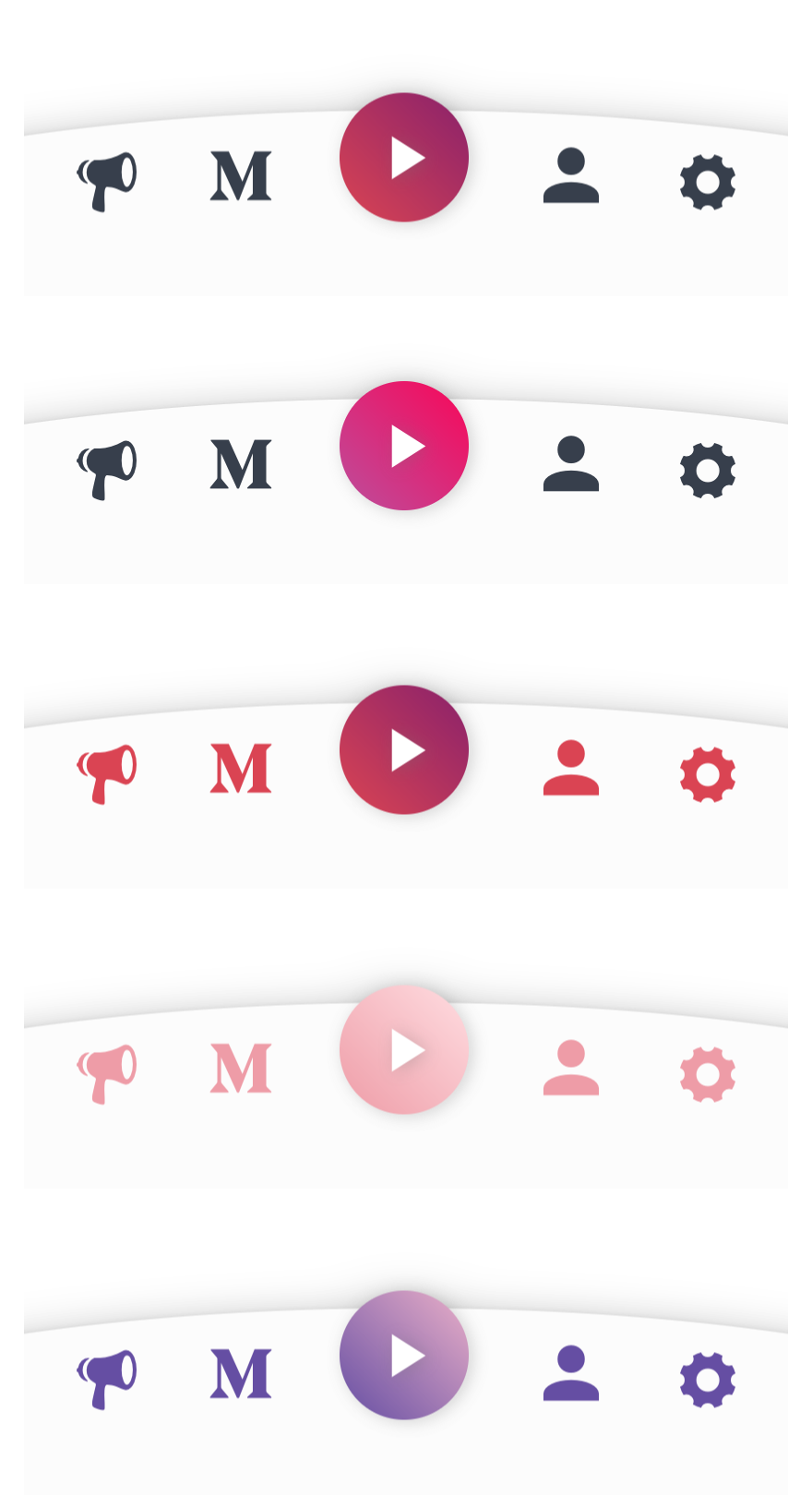The driver works as middle-man and can be especially handy when events are not supported by kernel module / distro code yet. The driver is listening for events of devices added by default (Asus keyboard and Asus WMI hotkeys) or re-defined devices in custom configuration (e.g. Lid Switch and Asus WMI accel tablet mode). When is appropriate event caught then is handled by custom configuration. For example, can be toggled LED status or changed content of the control file (e.g. fan modes), sent another key event, or executed custom command. Configuration examples are here or predefined layouts here.
If you find the project useful, do not forget to give project a People already did!
- Allowed listen to events not only from devices
Asus keyboardorAsus WMI hotkeys - Allowed to send custom commands (e.g.
xinput enable 19) - Allowed to fix any stateful binary switches (e.g.
switch lid state,switch tablet-mode state) - Allowed to fix any special Fn+ key including associated LED (directly via
debugfsor kernel modules brightness files) or control files with multiple possibleintvalues (e.g. kernel modules filesthrottle_thermal_policy–[0,1,2])
- (Optionally for LEDs without kernel modules yet) have mounted
debugfsto/sys/kernel/debug/asus-nb-wmifrom kernel modulesasus-wmi, asus-nb-wmi
Get the latest dev version using git
$ git clone https://github.com/asus-linux-drivers/asus-wmi-hotkeys-driver
$ cd asus-wmi-hotkeys-driverand install
$ bash install.shor run separate parts of the install script
- run whenever the user logs in (do NOT run as
$ sudo, works viasystemctl --user)
$ bash install_service.shTo uninstall run
$ bash uninstall.shor run separate parts of the uninstall script
$ bash uninstall_service.shHow to discover the key value and bind it to something else using this driver.
- Find the event ID of
Asus WMI hotkeysfor example like this:
$ libinput debug-events
...
-event4 DEVICE_ADDED Asus WMI hotkeys seat0 default group9 cap:ksudo evemu-record /dev/input/event4
...
- Listen for found event number and press the key you want bind to something else for example using
$ sudo evtest /dev/input/event4(which returns already hex values) or$ sudo evemu-record /dev/input/event4(where values has to be converted from decimal to hex):
$ sudo apt install evtest
$ sudo evtest
...
/dev/input/event4: Asus WMI hotkeys
...
Select the device event number [0-24]: 4
Event: time 1695811053.452927, type 4 (EV_MSC), code 4 (MSC_SCAN), value 7c
Event: time 1695811053.452927, type 1 (EV_KEY), code 248 (KEY_MICMUTE), value 1
Event: time 1695811053.452927, -------------- SYN_REPORT ------------
Event: time 1695811053.452938, type 1 (EV_KEY), code 248 (KEY_MICMUTE), value 0
Event: time 1695811053.452938, -------------- SYN_REPORT ------------
Event: time 1695811057.648891, type 4 (EV_MSC), code 4 (MSC_SCAN), value 85
Event: time 1695811057.648891, type 1 (EV_KEY), code 212 (KEY_CAMERA), value 1
Event: time 1695811057.648891, -------------- SYN_REPORT ------------
Event: time 1695811057.648901, type 1 (EV_KEY), code 212 (KEY_CAMERA), value 0
Event: time 1695811057.648901, -------------- SYN_REPORT ------------
Event: time 1695811059.000888, type 4 (EV_MSC), code 4 (MSC_SCAN), value 6b
Event: time 1695811059.000888, type 1 (EV_KEY), code 191 (KEY_F21), value 1
Event: time 1695811059.000888, -------------- SYN_REPORT ------------
Event: time 1695811059.000898, type 1 (EV_KEY), code 191 (KEY_F21), value 0
Event: time 1695811059.000898, -------------- SYN_REPORT ------------
$ sudo apt-get install evemu-tools
$ sudo evemu-record /dev/input/event4
...
E: 0.000001 0004 0004 0107 # EV_MSC / MSC_SCAN 107
E: 0.000001 0001 00bf 0001 # EV_KEY / KEY_F21 1
E: 0.000001 0000 0000 0000 # ------------ SYN_REPORT (0) ---------- +0ms
E: 0.000024 0001 00bf 0000 # EV_KEY / KEY_F21 0
E: 0.000024 0000 0000 0000 # ------------ SYN_REPORT (0) ---------- +0ms
E: 2.476044 0004 0004 0124 # EV_MSC / MSC_SCAN 124
E: 2.476044 0001 00f8 0001 # EV_KEY / KEY_MICMUTE 1
E: 2.476044 0000 0000 0000 # ------------ SYN_REPORT (0) ---------- +2476ms
E: 2.476066 0001 00f8 0000 # EV_KEY / KEY_MICMUTE 0
E: 2.476066 0000 0000 0000 # ------------ SYN_REPORT (0) ---------- +0ms
E: 2.792149 0004 0004 0133 # EV_MSC / MSC_SCAN 133
E: 2.792149 0001 00d4 0001 # EV_KEY / KEY_CAMERA 1
E: 2.792149 0000 0000 0000 # ------------ SYN_REPORT (0) ---------- +316ms
E: 2.792178 0001 00d4 0000 # EV_KEY / KEY_CAMERA 0
E: 2.792178 0000 0000 0000 # ------------ SYN_REPORT (0) ---------- +0ms
SE: 5.003936 0004 0004 0134 # EV_MSC / MSC_SCAN 134
E: 5.003936 0001 0094 0001 # EV_KEY / KEY_PROG1 1
E: 5.003936 0000 0000 0000 # ------------ SYN_REPORT (0) ---------- +2211ms
E: 5.003972 0001 0094 0000 # EV_KEY / KEY_PROG1 0
E: 5.003972 0000 0000 0000 # ------------ SYN_REPORT (0) ---------- +0ms
- Discovered
EV_MSC / MSC_SCANvalue use in hexa format in config as well as appropriate key to which you want to bind that key, for example:
from libevdev import EV_KEY
KEY_WMI_TOUCHPAD = 0x6B # 107
key_wmi_touchpad = [
KEY_WMI_TOUCHPAD,
EV_KEY.KEY_TOUCHPAD_TOGGLE
]
keys_wmi = [
key_wmi_touchpad
]
How to discover new LED value? Run file sudo bash tests/test_devid.sh (but FIRST! change range of tested range of ids in script row number 5 for example to 60000..60100, do not worry, value is tried to set up to 1 hex on 1s (pause between testing each device id) and then is reverted back previously exist value so script changes nothing) and during running check by eyes whether is LED activated.
- Discovered keys and associated LEDs up to this moment that might be equal across models:
Model: UP5401EA & UN5401QAB
KEY_WMI_TOUCHPAD = 0x6B # 107
KEY_WMI_MICMUTE = 0x7C # 124
KEY_WMI_CAMERA = 0x85 # 133
KEY_WMI_MYASUS = 0x86 # 134
KEY_WMI_MICMUTE_LED = '/sys/class/leds/platform::micmute/brightness' # or 0x00040017
KEY_WMI_CAMERA_LED = 0x00060079
# LEDs 0x00060079 and 0x00040017 can be found in DSDT.dsl table too
...
If ((IIA0 == 0x00060079))
{
If ((IIA1 == One))
{
SGOV (0x05, Zero)
}
ElseIf ((IIA1 == Zero))
{
SGOV (0x05, Ones)
}
Return (One)
}
If ((IIA0 == 0x00040017))
{
If ((IIA1 == One))
{
SGOV (0x59, Zero)
}
Else
{
SGOV (0x59, Ones)
}
Return (One)
}
...
Model: UX8402
KEY_WMI_SCREENPAD = 0x6A #106
KEY_WMI_SWITCHWINDOWS = 0x9C #156
Model: UX582X
KEY_WMI_FAN = 0x9D # 157
Model: GU603ZI
KEY_WMI_FAN = -13565778 # ff3100ae
KEY_WMI_FAN_THROTTLE_THERNAL_POLICY = '/sys/devices/platform/asus-nb-wmi/throttle_thermal_policy'
KEY_WMI_FAN_THROTTLE_THERNAL_POLICY_VALUES = [
0,
1,
2
]
Model: unknown
KEY_WMI_CAMERA_LED = 0x00060078 # https://github.com/Plippo/asus-wmi-screenpad/blob/keyboard_camera_led/inc/asus-wmi.h
For example:
# fix only key
key_wmi_camera = [
KEY_WMI_CAMERA,
EV_KEY.SOME_KEY
]
# fix only led
key_wmi_camera = [
KEY_WMI_CAMERA,
KEY_WMI_CAMERA_LED
]
# fix key and fix led too
key_wmi_camera = [
KEY_WMI_CAMERA,
KEY_WMI_CAMERA_LED
EV_KEY.SOME_KEY
]
# fix only controlling file with multiple values (e.g. fan key with allowed modes 0,1,2)
KEY_WMI_FAN_THROTTLE_THERNAL_POLICY = '/sys/devices/platform/asus-nb-wmi/throttle_thermal_policy'
KEY_WMI_FAN_THROTTLE_THERNAL_POLICY_VALUES = [
0,
1,
2
]
key_wmi_fan = [
EV_KEY.KEY_PROG4,
[
KEY_WMI_FAN_THROTTLE_THERNAL_POLICY,
KEY_WMI_FAN_THROTTLE_THERNAL_POLICY_VALUES
]
]
# fix by custom command (disable keyboard, touchpad, ..)
key_wmi_tablet_mode_disable_keyboard = [
InputEvent(EV_SW.SW_TABLET_MODE, 1), # or e.g. EV_SW.SW_LID
'xinput disable 19'
]
key_wmi_tablet_mode_enable_keyboard = [
InputEvent(EV_SW.SW_TABLET_MODE, 0),
'xinput enable 19'
]
# fix event for the specific device
allowed_listen_to_devices = [
"Asus keyboard", # listening by default
"Asus WMI hotkeys", # listening by default
"Lid Switch", # NOT listening by default
"Asus WMI accel tablet mode", # NOT listening by default
]
Backup configuration is up to you as the repository contains only examples for easy getting started. Config is located here:
$ cat "/usr/share/asus_wmi_hotkeys-driver/keys_wmi_layouts/layout.py"
To activate the logger, do this in a console:
$ LOG=DEBUG sudo -E ./asus_wmi_hotkeys.py
- [python service, not configurable, mic-mute LED via kernel module brightness file] https://github.com/Arkapravo-Ghosh/asus-micmute-key-led-driver
- [how to write kernel patch for adding not supported key led by kernel yet] https://github.com/asus-linux-drivers/asus-how-to-kernel-driver



























